The truth about smart cities: ‘In the end, they will destroy democracy’
January 6, 2015
Warning: Undefined variable $thumb in /var/www/web/indiantollways.com/wp-content/plugins/digg-digg/include/dd-class.php on line 887
A woman drives to the outskirts of the city and steps directly on to a train; her electric car then drives itself off to park and recharge. A man has a heart attack in the street; the emergency services send a drone equipped with a defibrillator to arrive crucial minutes before an ambulance can. A family of flying maintenance robots lives atop an apartment block – able to autonomously repair cracks or leaks and clear leaves from the gutters.
Such utopian, urban visions help drive the “smart city” rhetoric that has, for the past decade or so, been promulgated most energetically by big technology, engineering and consulting companies. The movement is predicated on ubiquitous wireless broadband and the embedding of computerised sensors into the urban fabric, so that bike racks and lamp posts, CCTV and traffic lights, as well as geeky home appliances such as internet fridges and remote-controlled heating systems, become part of the so-called “internet of things” (the global market for which is now estimated at $1.7tn). Better living through biochemistry gives way to a dream of better living through data. You can even take an MSc in Smart Citiesat University College, London.
Yet there are dystopian critiques, too, of what this smart city vision might mean for the ordinary citizen. The phrase itself has sparked a rhetorical battle between techno-utopianists and postmodern flâneurs: should the city be an optimised panopticon, or a melting pot of cultures and ideas?
And what role will the citizen play? That of unpaid data-clerk, voluntarily contributing information to an urban database that is monetised by private companies? Is the city-dweller best visualised as a smoothly moving pixel, travelling to work, shops and home again, on a colourful 3D graphic display? Or is the citizen rightfully an unpredictable source of obstreperous demands and assertions of rights? “Why do smart cities offer only improvement?” asks the architect Rem Koolhaas. “Where is the possibility of transgression?”
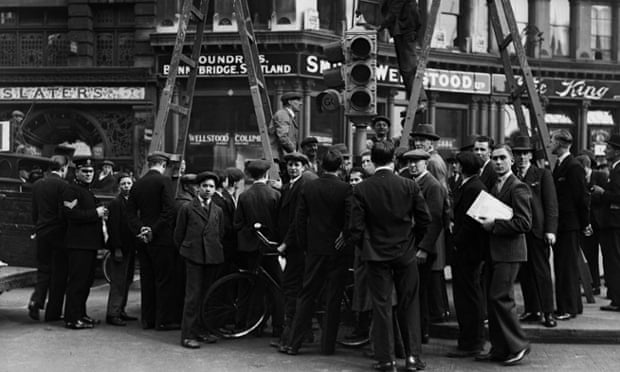
The smart city concept arguably dates back at least as far as the invention of automated traffic lights, which were first deployed in 1922 in Houston, Texas. Leo Hollis, author of Cities Are Good For You, says the one unarguably positive achievement of smart city-style thinking in modern times is the train indicator boards on the London Underground. But in the last decade, thanks to the rise of ubiquitous internet connectivity and the miniaturisation of electronics in such now-common devices as RFID tags, the concept seems to have crystallised into an image of the city as a vast, efficient robot – a vision that originated, according toAdam Greenfield at LSE Cities, with giant technology companies such as IBM, Cisco and Software AG, all of whom hoped to profit from big municipal contracts.
“The notion of the smart city in its full contemporary form appears to have originated within these businesses,” Greenfield notes in his 2013 book Against the Smart City, “rather than with any party, group or individual recognised for their contributions to the theory or practice of urban planning.”
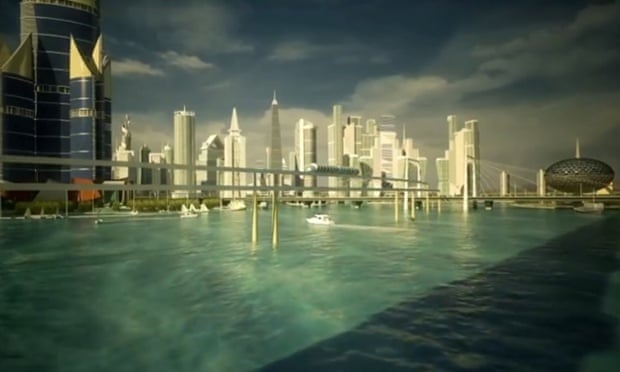
Whole new cities, such as Songdo in South Korea, have already been constructed according to this template. Its buildings have automatic climate control and computerised access; its roads and water, waste and electricity systems are dense with electronic sensors to enable the city’s brain to track and respond to the movement of residents. But such places retain an eerie and half-finished feel to visitors – which perhaps shouldn’t be surprising. According to Antony M Townsend, in his 2013 book Smart Cities, Songdo was originally conceived as “a weapon for fighting trade wars”; the idea was “to entice multinationals to set up Asian operations at Songdo … with lower taxes and less regulation”.
In India, meanwhile, prime minister Narendra Modi has promised to build no fewer than 100 smart cities – a competitive response, in part, to China’s inclusion of smart cities as a central tenet of its grand urban plan. Yet for the near-term at least, the sites of true “smart city creativity” arguably remain the planet’s established metropolises such as London, New York, Barcelona and San Francisco. Indeed, many people think London is the smartest city of them all just now — Duncan Wilson of Intel calls it a “living lab” for tech experiments
So what challenges face technologists hoping to weave cutting-edge networks and gadgets into centuries-old streets and deeply ingrained social habits and patterns of movement? This was the central theme of the recent “Re.Work Future Cities Summit” in London’s Docklands – for which two-day public tickets ran to an eye-watering £600.
The event was structured like a fast-cutting series of TED talks, with 15-minute investor-friendly presentations on everything from “emotional cartography” to biologically inspired buildings. Not one non-Apple-branded laptop could be spotted among the audience, and at least one attendee was seen confidently sporting the telltale fat cyan arm of Google Glass on his head.
“Instead of a smart phone, I want you all to have a smart drone in your pocket,” said one entertaining robotics researcher, before tossing up into the auditorium a camera-equipped drone that buzzed around like a fist-sized mosquito. Speakers enthused about the transport app Citymapper, and how the city of Zurich is both futuristic and remarkably civilised. People spoke about the “huge opportunity” represented by expanding city budgets for technological “solutions”.
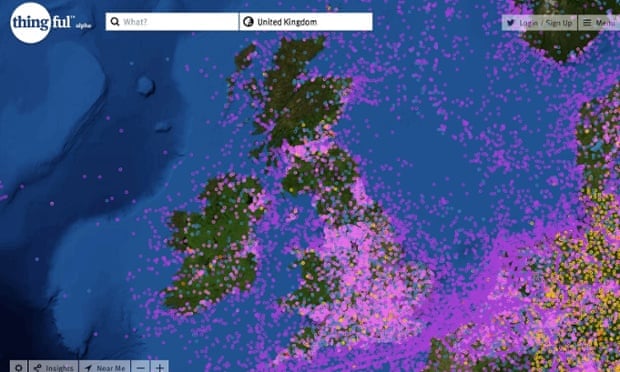
Strikingly, though, many of the speakers took care to denigrate the idea of the smart city itself, as though it was a once-fashionable buzzphrase that had outlived its usefulness. This was done most entertainingly by Usman Haque, of the urban consultancy Umbrellium. The corporate smart-city rhetoric, he pointed out, was all about efficiency, optimisation, predictability, convenience and security. “You’ll be able to get to work on time; there’ll be a seamless shopping experience, safety through cameras, et cetera. Well, all these things make a city bearable, but they don’t make a city valuable.”
As the tech companies bid for contracts, Haque observed, the real target of their advertising is clear: “The people it really speaks to are the city managers who can say, ‘It wasn’t me who made the decision, it was the data.’”
Of course, these speakers who rejected the corporate, top-down idea of the smart city were themselves demonstrating their own technological initiatives to make the city, well, smarter. Haque’s project Thingful, for example, is billed as a search engine for the internet of things. It could be used in the morning by a cycle commuter: glancing at a personalised dashboard of local data, she could check local pollution levels and traffic, and whether there are bikes in the nearby cycle-hire rack.
“The smart city was the wrong idea pitched in the wrong way to the wrong people,” suggested Dan Hill, of urban innovators the Future Cities Catapult. “It never answered the question: ‘How is it tangibly, materially going to affect the way people live, work, and play?’” (His own work includes Cities Unlocked, an innovative smartphone audio interface that can help visually impaired people navigate the streets.) Hill is involved with Manchester’s current smart city initiative, which includes apparently unglamorous things like overhauling the Oxford Road corridor – a bit of “horrible urban fabric”. This “smart stuff”, Hill tells me, “is no longer just IT – or rather IT is too important to be called IT any more. It’s so important you can’t really ghettoise it in an IT city. A smart city might be a low-carbon city, or a city that’s easy to move around, or a city with jobs and housing. Manchester has recognised that.”
One take-home message of the conference seemed to be that whatever the smart city might be, it will be acceptable as long as it emerges from the ground up: what Hill calls “the bottom-up or citizen-led approach”. But of course, the things that enable that approach – a vast network of sensors amounting to millions of electronic ears, eyes and noses – also potentially enable the future city to be a vast arena of perfect and permanent surveillance by whomever has access to the data feeds.
One only has to look at the hi-tech nerve centre that IBM built for Rio de Janeiroto see this Nineteen Eighty-Four-style vision already alarmingly realised. It is festooned with screens like a Nasa Mission Control for the city. As Townsend writes: “What began as a tool to predict rain and manage flood response morphed into a high-precision control panel for the entire city.” He quotes Rio’s mayor, Eduardo Paes, as boasting: “The operations centre allows us to have people looking into every corner of the city, 24 hours a day, seven days a week.”
What’s more, if an entire city has an “operating system”, what happens when it goes wrong? The one thing that is certain about software is that it crashes. The smart city, according to Hollis, is really just a “perpetual beta city”. We can be sure that accidents will happen – driverless cars will crash; bugs will take down whole transport subsystems or the electricity grid; drones could hit passenger aircraft. How smart will the architects of the smart city look then?
A less intrusive way to make a city smarter might be to give those who govern it a way to try out their decisions in virtual reality before inflicting them on live humans. This is the idea behind city-simulation company Simudyne, whose projects include detailed computerised models for planning earthquake response or hospital evacuation. It’s like the strategy game SimCity – for real cities. And indeed Simudyne now draws a lot of its talent from the world of videogames. “When we started, we were just mathematicians,” explains Justin Lyon, Simudyne’s CEO. “People would look at our simulations and joke that they were inscrutable. So five or six years ago we developed a new system which allows you to make visualisations – pretty pictures.” The simulation can now be run as an immersive first-person gameworld, or as a top-down SimCity-style view, where “you can literally drop policy on to the playing area”.
Another serious use of “pretty pictures” is exemplified by the work of ScanLAB Projects, which uses Lidar and ground-penetrating radar to make 3D visualisations of real places. They can be used for art installations and entertainment: for example, mapping underground ancient Rome for the BBC. But the way an area has been used over time, both above and below ground, can also be presented as a layered historical palimpsest, which can serve the purposes of archaeological justice and memory – as with ScanLAB’s Living Death Campsproject with Forensic Architecture, on two concentration-camp sites in the former Yugoslavia.
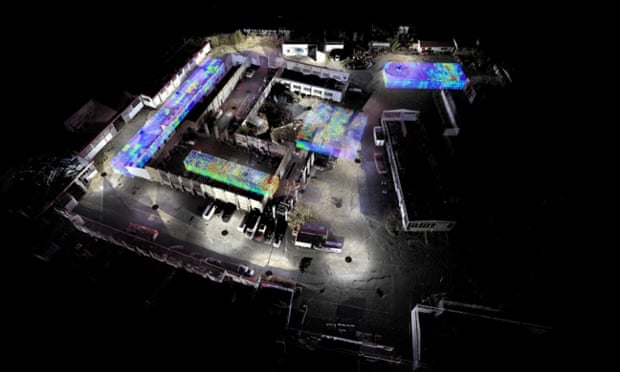
For Simudyne’s simulations, meanwhile, the visualisations work to “gamify” the underlying algorithms and data, so that anyone can play with the initial conditions and watch the consequences unfold. Will there one day be convergence between this kind of thing and the elaborately realistic modelled cities that are built for commercial videogames? “There’s absolutely convergence,” Lyon says. A state-of-the art urban virtual reality such as the recreation of Chicago in this year’s game Watch Dogs requires a budget that runs to scores of millions of dollars. But, Lyon foresees, “Ten years from now, what we see in Watch Dogs today will be very inexpensive.”
What if you could travel through a visually convincing city simulation wearing the VR headset, Oculus Rift? When Lyon first tried one, he says, “Everything changed for me.” Which prompts the uncomfortable thought that when such simulations are indistinguishable from the real thing (apart from the zero possibility of being mugged), some people might prefer to spend their days in them. The smartest city of the future could exist only in our heads, as we spend all our time plugged into a virtual metropolitan reality that is so much better than anything physically built, and fail to notice as the world around us crumbles.
In the meantime, when you hear that cities are being modelled down to individual people – or what in the model are called “agents” – you might still feel a jolt of the uncanny, and insist that free-will makes your actions in the city unpredictable. To which Lyon replies: “They’re absolutely right as individuals, but collectively they’re wrong. While I can’t predict what you are going to do tomorrow, I can have, with some degree of confidence, a sense of what the crowd is going to do, what a group of people is going to do. Plus, if you’re pulling in data all the time, you use that to inform the data of the virtual humans.
“Let’s say there are 30 million people in London: you can have a simulation of all 30 million people that very closely mirrors but is not an exact replica of London. You have the 30 million agents, and then let’s have a business-as-usual normal commute, let’s have a snowstorm, let’s shut down a couple of train lines, or have a terrorist incident, an earthquake, and so on.” Lyons says you will get a highly accurate sense of how people, en masse, will respond to these scenarios. “While I’m not interested in a specific individual, I’m interested in the emergent behaviour of the crowd.”

But what about more nefarious bodies who are interested in specific individuals? As citizens stumble into a future where they will be walking around a city dense with sensors, cameras and drones tracking their every movement – even whether they are smiling (as has already been tested at the Cheltenham Jazz Festival) or feeling gloomy – there is a ticking time-bomb of arguments about surveillance and privacy that will dwarf any previous conversations about Facebook or even, perhaps, government intelligence agencies scanning our email. Unavoidable advertising spam everywhere you go, as in Minority Report, is just the most obvious potential annoyance. (There have already been “smart billboards” that recognised Minis driving past and said hello to them.) The smart city might be a place like Rio on steroids, where you can never disappear.
“If you have a mobile phone, and the right sensors are deployed across the city, people have demonstrated the ability to track those individual phones,” Lyon points out. “And there’s nothing that would prevent you from visualising that movement in a SimCity-like landscape, like in Watch Dogs where you see an avatar moving through the city and you can call up their social-media profile. If you’re trying to search a very large dataset about how someone’s moving, it’s very hard to get your head around it, but as soon as you fire up a game-style visualisation, it’s very easy to see, ‘Oh, that’s where they live, that’s where they work, that’s where their mistress must be, that’s where they go to drink a lot.’”
This is potentially an issue with open-data initiatives such as those currently under way in Bristol and Manchester, which is making publicly available the data it holds about city parking, procurement and planning, public toilets and the fire service. The democratic motivation of this strand of smart-city thinking seems unimpugnable: the creation of municipal datasets is funded by taxes on citizens, so citizens ought to have the right to use them. When presented in the right way – “curated”, if you will, by the city itself, with a sense of local character – such information can help to bring “place back into the digital world”, says Mike Rawlinson of consultancy City ID, which is working with Bristol on such plans.
But how safe is open data? It has already been demonstrated, for instance, that the openly accessible data of London’s cycle-hire scheme can be used to track individual cyclists. “There is the potential to see it all as Big Brother,” Rawlinson says. “If you’re releasing data and people are reusing it, under what purpose and authorship are they doing so?” There needs, Hill says, to be a “reframed social contract”.
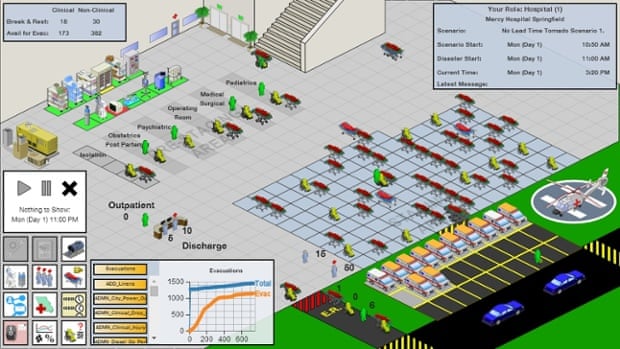
Sometimes, at least, there are good reasons to track particular individuals. Simudyne’s hospital-evacuation model, for example, needs to be tied in to real data. “Those little people that you see [on screen], those are real people, that’s linking to the patient database,” Lyon explains – because, for example, “we need to be able to track this poor child that’s been burned.” But tracking everyone is a different matter: “There could well be a backlash of people wanting literally to go off-grid,” Rawlinson says. Disgruntled smart citizens, unite: you have nothing to lose but your phones.
In truth, competing visions of the smart city are proxies for competing visions of society, and in particular about who holds power in society. “In the end, the smart city will destroy democracy,” Hollis warns. “Like Google, they’ll have enough data not to have to ask you what you want.”
You sometimes see in the smart city’s prophets a kind of casual assumption that politics as we know it is over. One enthusiastic presenter at the Future Cities Summit went so far as to say, with a shrug: “Internet eats everything, and internet will eat government.” In another presentation, about a new kind of “autocatalytic paint” for street furniture that “eats” noxious pollutants such as nitrous oxide, an engineer in a video clip complained: “No one really owns pollution as a problem.” Except that national and local governments do already own pollution as a problem, and have the power to tax and regulate it. Replacing them with smart paint ain’t necessarily the smartest thing to do.
And while some tech-boosters celebrate the power of companies such as Über – the smartphone-based unlicensed-taxi service now banned in Spain and New Delhi, and being sued in several US states – to “disrupt” existing transport infrastructure, Hill asks reasonably: “That Californian ideology that underlies that user experience, should it really be copy-pasted all over the world? Let’s not throw away the idea of universal service that Transport for London adheres to.”
Perhaps the smartest of smart city projects needn’t depend exclusively – or even at all – on sensors and computers. At Future Cities, Julia Alexander of Siemens nominated as one of the “smartest” cities in the world the once-notorious Medellin in Colombia, site of innumerable gang murders a few decades ago. Its problem favelas were reintegrated into the city not with smartphones but with publicly funded sports facilities and a cable car connecting them to the city. “All of a sudden,” Alexander said, “you’ve got communities interacting” in a way they never had before. Last year, Medellin – now the oft-cited poster child for “social urbanism” – was named the most innovative city in the world by the Urban Land Institute.
One sceptical observer of many presentations at the Future Cities Summit, Jonathan Rez of the University of New South Wales, suggests that “a smarter way” to build cities “might be for architects and urban planners to have psychologists and ethnographers on the team.” That would certainly be one way to acquire a better understanding of what technologists call the “end user” – in this case, the citizen. After all, as one of the tribunes asks the crowd in Shakespeare’s Coriolanus: “What is the city but the people?”
Source: The Guardian







